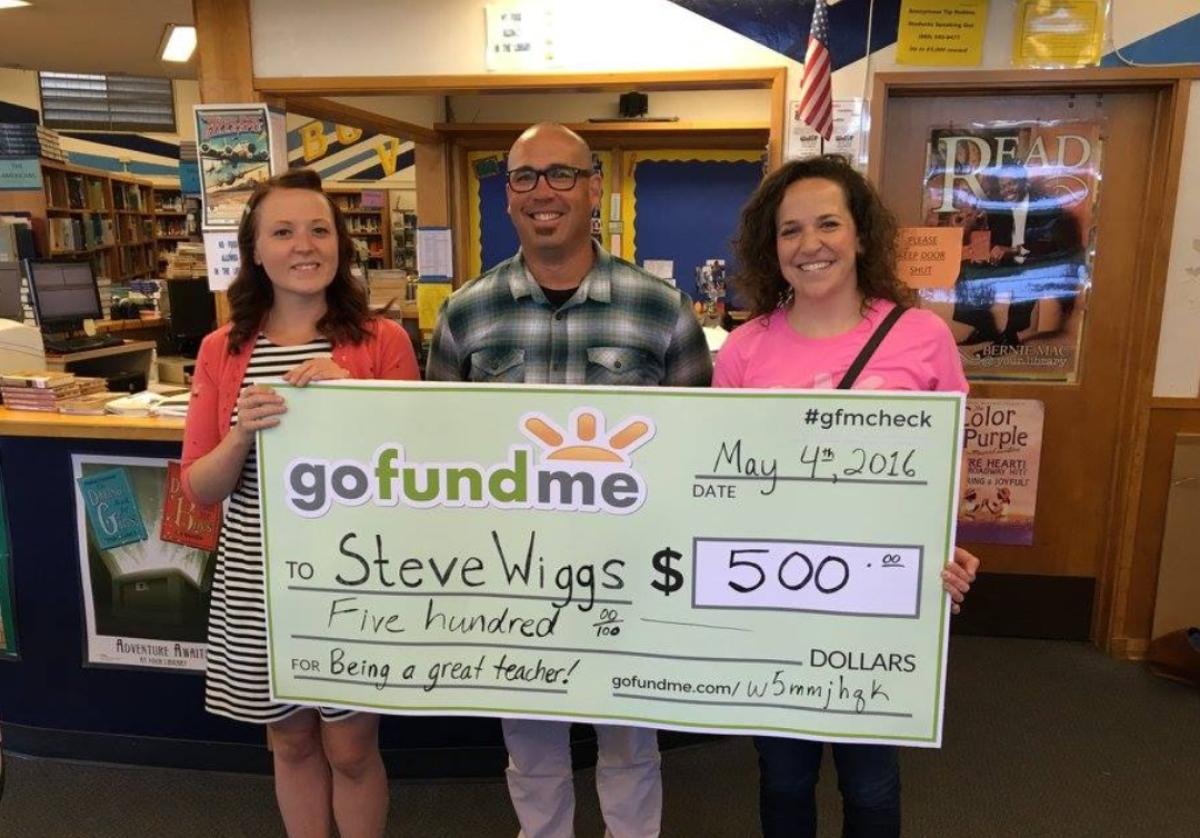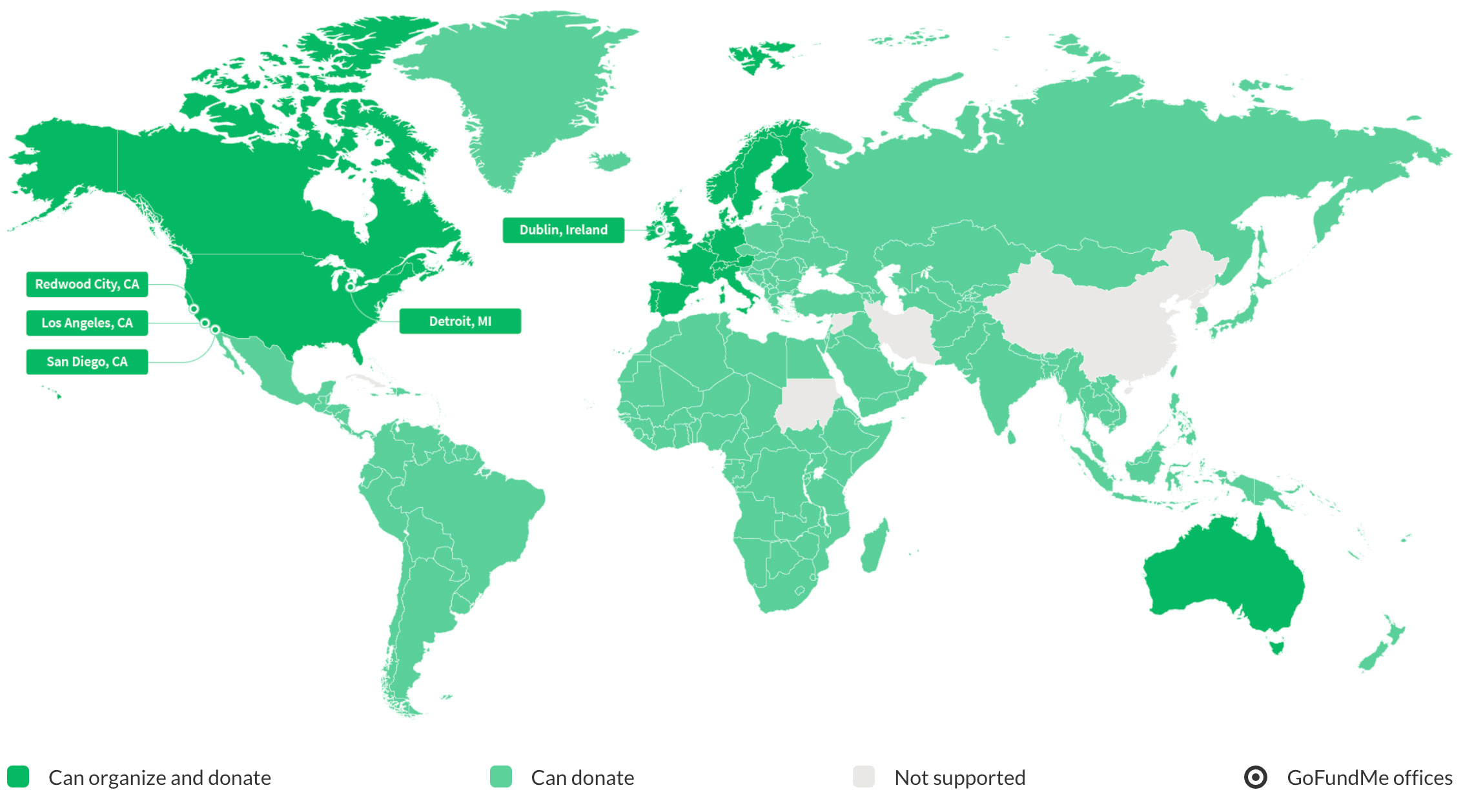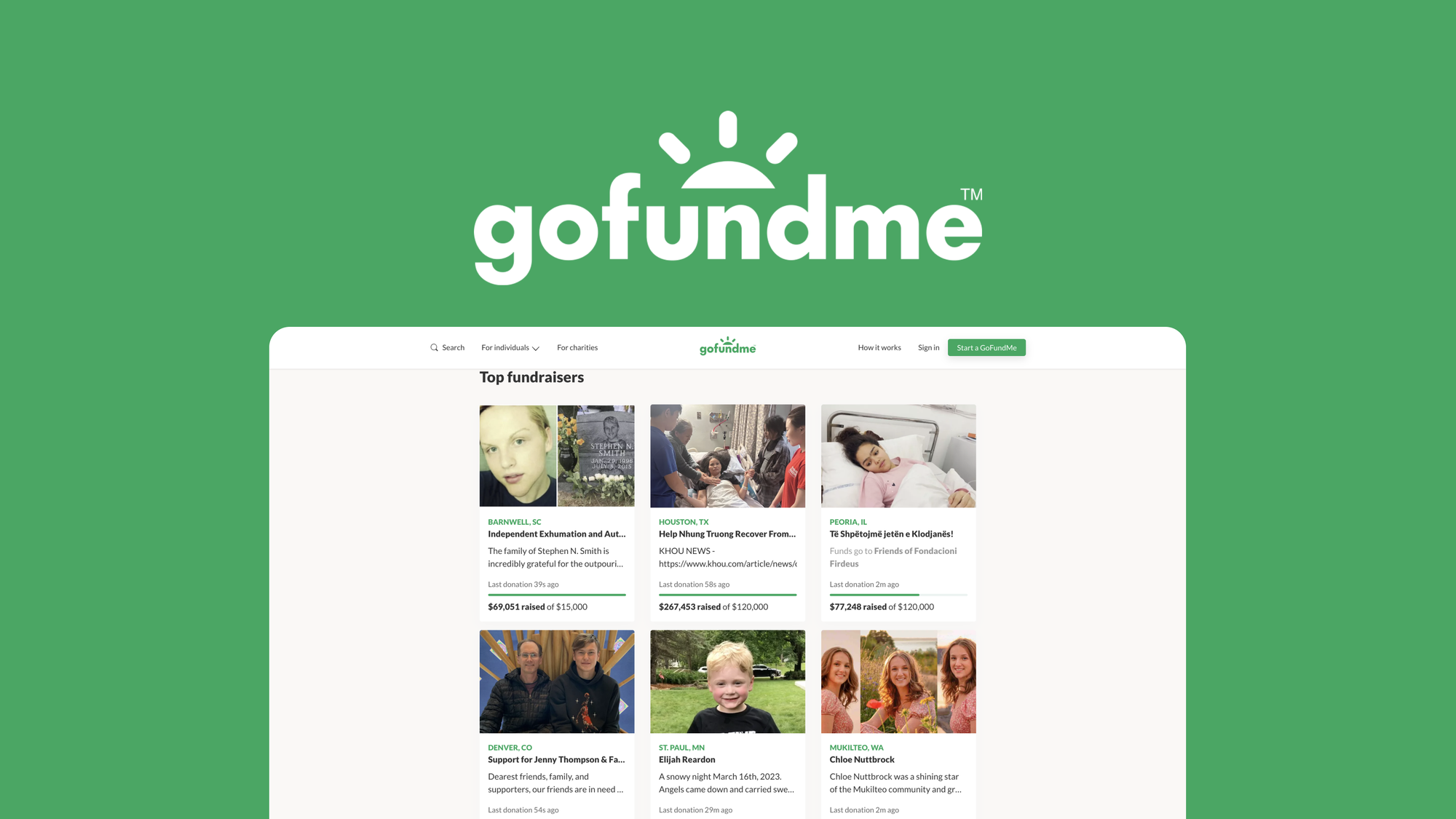Who Owns GoFundMe? Unveiling The Crowdfunding Giant's Ownership
GoFundMe has become a household name, synonymous with online fundraising for causes ranging from personal medical emergencies to community projects and charitable initiatives. As one of the most widely used crowdfunding platforms in the world, it has fundamentally changed the way people give and receive support. Yet, despite its pervasive presence and significant impact on millions of lives globally, a common question often arises: who owns GoFundMe? Understanding the ownership structure of such a pivotal platform is not merely a matter of curiosity; it is crucial for comprehending its governance, financial stability, and overall operations, especially given its role in handling significant sums of money for critical needs.
This article aims to demystify the ownership of GoFundMe, delving into its origins, evolution, and the business model that sustains its massive operations. We will explore the key players behind its success, from its founders to its current leadership, and shed light on how this powerful platform generates revenue while facilitating acts of generosity worldwide. By the end of this comprehensive guide, you will have a clearer picture of the entity that stands behind the world's largest fundraising platform, ensuring transparency and trust in its vital services.
Table of Contents
- GoFundMe: A Global Phenomenon in Philanthropy
- The Initial Journey: From Founding to Acquisition
- Unpacking GoFundMe's Current Ownership Structure
- The GoFundMe Business Model: How Does It Generate Revenue?
- Leadership at the Helm: The Executive Team Driving GoFundMe
- GoFundMe's Impact and Trustworthiness
- GoFundMe's Ecosystem: Beyond the Core Platform
- The Importance of Understanding GoFundMe's Ownership
GoFundMe: A Global Phenomenon in Philanthropy
At its core, GoFundMe is a social fundraising platform that aims to change the way the world gives. Founded in 2010 by Brad Damphousse and Andrew Ballester, it quickly established itself as a pioneering force in the burgeoning crowdfunding landscape. From its inception, the platform was designed to be intuitive and accessible, empowering individuals, groups, and charities to raise money fast and efficiently for a myriad of causes. Whether it's for medical emergencies, memorial tributes, funerals, educational pursuits, or supporting nonprofits, GoFundMe provides a vital lifeline for those in need.
Over the years, GoFundMe has solidified its position as the world's largest fundraising platform, becoming a trusted name in online giving. Its simplicity is a key factor in its widespread adoption: with no fee to start a fundraiser, it lowers the barrier to entry for anyone looking to mobilize support. This ease of use, combined with a powerful and trusted system, has enabled GoFundMe to facilitate countless acts of generosity, transforming individual appeals into global movements of solidarity. The platform is not just a tool; it's a community where donors step up to help, and recipients express their gratitude, as evidenced by the over 15 million messages of thanks exchanged in 2021 alone.
The Initial Journey: From Founding to Acquisition
GoFundMe's journey began in 2010, marking a significant moment in the evolution of online fundraising. Brad Damphousse and Andrew Ballester envisioned a platform that would democratize philanthropy, making it possible for anyone to raise money for personal causes without the complexities often associated with traditional fundraising methods. Their vision resonated deeply, and the platform experienced rapid growth in its early years, demonstrating the immense demand for such a service.
However, like many successful startups, GoFundMe eventually caught the attention of larger investment entities. In 2015, just five years after its founding, GoFundMe was acquired by venture capitalists. This acquisition marked a pivotal moment in the company's history, transitioning it from a founder-led startup to a venture-backed enterprise. While the specific venture capital firms involved are not always publicly highlighted in the same way as a publicly traded company, this shift meant that the ownership moved into the hands of investment groups looking to scale the platform and maximize its potential. It's important to note that GoFundMe stock is not publicly traded, meaning you cannot buy shares of the company on a stock exchange. This private ownership structure influences its operational decisions and financial strategies, differentiating it from publicly listed tech giants.
Unpacking GoFundMe's Current Ownership Structure
So, who owns GoFundMe today? As established, GoFundMe is not a publicly traded company. Instead, it remains a privately held entity, primarily owned by a consortium of venture capital firms. While specific names of all individual investors or firms are not always widely publicized, this private ownership shapes the platform's structure and its potential impact on charitable giving. Unlike publicly held companies that are accountable to a broad base of shareholders and subject to stringent reporting requirements, privately held companies like GoFundMe primarily answer to their private investors and board members.
This ownership model allows for greater flexibility in strategic decision-making and long-term planning, as there isn't the constant pressure of quarterly earnings reports that often influences publicly traded companies. The venture capitalists who acquired GoFundMe in 2015 are focused on growing the company's market share, enhancing its technology, and expanding its reach, ultimately aiming for a significant return on their investment through potential future acquisitions or a public offering. This private ownership also means that detailed financial information, such as specific profit margins or revenue figures, is not readily available to the general public, contributing to the perceived mystery around its business model. It's also worth noting that GoFundMe expanded its portfolio by acquiring CrowdRise, another significant player in the online fundraising space, further consolidating its position as a leader in the sector.
The GoFundMe Business Model: How Does It Generate Revenue?
Despite its widespread use, not much is known about the GoFundMe business model, including how the organization operates to generate money and profit, as well as to keep its business up and running. This lack of public transparency regarding its financial mechanics often leads to questions about how the company sustains itself, especially given its "no fee to start" policy for fundraisers.
Initially, GoFundMe charged a 5% platform fee on each donation, in addition to payment processing fees. However, in 2017, GoFundMe made a significant shift in its business model for personal campaigns in the U.S., eliminating the platform fee entirely. This change was a strategic move to make the platform even more accessible and attractive to users. So, how does the company make money now? The primary revenue stream for GoFundMe today comes from voluntary tips. When donors contribute to a campaign, they are given the option to leave a voluntary tip for GoFundMe. This tip is separate from the donation itself and is entirely optional, allowing donors to decide how much they wish to contribute to support the platform's operations.
In addition to these voluntary tips, GoFundMe also generates revenue through payment processing fees. While GoFundMe itself doesn't charge a platform fee for personal campaigns, third-party payment processors (like credit card companies and banks) still levy a small transaction fee on each donation. GoFundMe often bundles this into the total amount processed, or it may receive a small portion of these fees through agreements with payment processors. For campaigns by certified charities, GoFundMe might operate on a different fee structure, or they might also rely on the voluntary tip model, depending on the specific arrangement. This hybrid model, heavily reliant on the goodwill of donors through voluntary tips, underscores GoFundMe's commitment to facilitating giving while ensuring its own sustainability as a business. It allows the platform to maintain its leading position and continue helping people, causes, and charities raise money fast and efficiently.
Leadership at the Helm: The Executive Team Driving GoFundMe
While the ownership of GoFundMe rests with venture capitalists, the day-to-day operations, strategic direction, and overall vision are steered by a dedicated executive team. Understanding the leadership is vital, as their expertise and decisions directly influence the platform's performance, its trustworthiness, and its ability to innovate in the rapidly evolving digital landscape. GoFundMe boasts a robust leadership structure, including key roles such as the CEO, CTO, COO, CFO, CAO, SVP of People, SVP of Finance and Data Insights, and SVP of Legal and Chief Legal Officer. These individuals bring diverse backgrounds and extensive experience to their respective responsibilities, ensuring the smooth and ethical functioning of a platform that handles millions of dollars in donations annually.
The executive team is responsible for everything from technological advancements and user experience improvements to financial management, legal compliance, and fostering a positive internal culture. Their collective efforts ensure that GoFundMe remains at the forefront of crowdfunding, continuously adapting to user needs and market demands. This includes leveraging new technologies like AI to amplify worldwide solidarity, as envisioned by its current chief executive.
Tim Cadogan: The Current CEO
At the pinnacle of GoFundMe's executive leadership is Tim Cadogan, who serves as the Chief Executive Officer. Cadogan's leadership is pivotal in shaping the company's strategic direction and public image. His background and vision are instrumental in navigating the complexities of a platform that bridges technology with human compassion. He is a recognized figure in the tech industry, and his influence extends beyond GoFundMe; in 2025, Time Magazine listed him as one of the world's 100 most influential people, a testament to his impact on the digital and philanthropic spheres.
Under Tim Cadogan's guidance, GoFundMe continues to explore how technology, including artificial intelligence, can further amplify worldwide solidarity. He has articulated a vision where AI and advanced tech can enhance the platform's ability to connect donors with causes, streamline operations, and ensure that help reaches those who need it most efficiently. His focus on leveraging innovation to improve the giving experience underscores the platform's commitment to its mission. While specific details about his compensation, full career history, education, and memberships are part of private company profiles, his role as CEO is to drive growth, maintain trust, and ensure the platform's long-term viability and positive societal impact.
GoFundMe's Impact and Trustworthiness
GoFundMe's impact on society is undeniable. It stands as the world's largest fundraising platform, providing an accessible and powerful tool for individuals and organizations alike. For many families and groups with nowhere else to turn, GoFundMe has become the last resort to cover critical expenses, such as funeral costs or overwhelming medical bills. The platform's ability to quickly mobilize support from a global community has made it an indispensable resource in times of crisis.
The trustworthiness of GoFundMe is paramount, especially given the sensitive nature of the funds it handles. The platform has invested significantly in security measures, fraud prevention, and donor protection to ensure that funds reach their intended recipients. Its reputation as a trusted platform is built on years of successful campaigns and positive user experiences. The ease with which one can start a fundraiser, combined with the transparent process of donating, reinforces this trust. The sheer volume of interactions, such as the millions of thank-you messages exchanged between donors and recipients, speaks volumes about the genuine connections and positive outcomes facilitated by the platform. This continuous cycle of giving and gratitude underscores why understanding who owns GoFundMe and how it operates is so important for maintaining public confidence in its vital services.
GoFundMe's Ecosystem: Beyond the Core Platform
While GoFundMe is primarily known for its direct crowdfunding platform, its influence and reach extend into a broader ecosystem of fundraising technologies. As mentioned, GoFundMe acquired CrowdRise, a platform that specialized in fundraising for charities and events, further solidifying GoFundMe's presence in the nonprofit sector. This acquisition allowed GoFundMe to offer more specialized tools and services to charities, complementing its strong position in personal fundraising.
The landscape of online fundraising is dynamic, with various platforms and software solutions catering to different needs. Understanding this broader context helps to appreciate GoFundMe's unique position and the competitive environment it operates within. While GoFundMe focuses on accessible, broad-based crowdfunding, other companies specialize in more tailored solutions for specific types of organizations.
Classy: A Related Entity in the Fundraising Landscape
In the realm of online fundraising, companies like Classy represent another significant facet of the industry. Classy is a software company and online fundraising platform specifically designed for nonprofit organizations. Headquartered in San Diego, California, Classy was founded by CEO Scot Chisholm, Pat Walsh, and Marshall Peden in 2006, originally with the mission to host fundraising events that benefit charities. The firm transitioned to a software and services company in 2010, subsequently launching its software-as-a-service (SaaS) products.
While Classy is not owned by GoFundMe, it operates within the same broader domain of digital philanthropy. Classy focuses on providing robust fundraising tools and data insights specifically tailored for nonprofit organizations, including peer-to-peer fundraising, event registration, and donation processing. Its existence highlights the diverse needs within the fundraising sector and the specialized solutions that have emerged to meet them. Understanding companies like Classy provides context to the overall digital fundraising ecosystem and GoFundMe's specific niche within it, showcasing how various platforms contribute to the larger goal of supporting causes and charities.
The Importance of Understanding GoFundMe's Ownership
In conclusion, understanding who owns GoFundMe is crucial to comprehending its governance, financial stability, and overall operations. As a privately held company primarily owned by venture capitalists, GoFundMe operates under a different set of financial and operational pressures compared to a publicly traded entity. This private ownership influences strategic decisions, investment in technology, and the company's long-term vision for changing the way the world gives.
For millions of users who rely on GoFundMe for their financial needs, often in dire circumstances (Your Money or Your Life - YMYL), knowing the ownership structure provides an essential layer of transparency. It helps users trust that the platform is stable, well-managed, and committed to its mission. The leadership team, spearheaded by CEO Tim Cadogan, plays a vital role in upholding this trust through their expertise, authoritativeness, and dedication to the platform's integrity. While the exact details of its business model might remain somewhat opaque, its reliance on voluntary tips and its "no fee to start" approach for personal campaigns demonstrate a commitment to accessibility.
GoFundMe has cemented its place as an indispensable tool for philanthropy, enabling acts of solidarity and support on an unprecedented scale. Its continuous evolution, driven by its leadership and sustained by its unique business model, ensures that it remains at the forefront of digital giving. By understanding the entity behind this powerful platform, users can engage with greater confidence, knowing that their contributions are part of a well-established and impactful global movement.
Do you have any experiences with GoFundMe you'd like to share? Or perhaps further questions about its operations? Feel free to leave a comment below. If you found this article insightful, consider sharing it with others who might benefit from understanding the intricate workings of this crowdfunding giant. Explore more articles on our site to deepen your knowledge of the digital philanthropy landscape.



Detail Author:
- Name : Macey Thompson
- Username : cortez95
- Email : sreichert@hotmail.com
- Birthdate : 1974-07-24
- Address : 228 Joanie Underpass Carterton, MI 73220-1341
- Phone : +1-254-685-6653
- Company : Morissette, Bahringer and Simonis
- Job : Host and Hostess
- Bio : Sapiente aut velit ea nihil quidem. Dolore laudantium asperiores dolorem ex. Eius quidem quisquam architecto mollitia ea dolorum. Non libero nostrum ratione ex. Facere hic et ea.
Socials
linkedin:
- url : https://linkedin.com/in/paris4221
- username : paris4221
- bio : Aut facere aliquam adipisci facere cumque.
- followers : 2371
- following : 995
tiktok:
- url : https://tiktok.com/@schmidtp
- username : schmidtp
- bio : Qui et dolorem est assumenda nam et.
- followers : 4205
- following : 2066
instagram:
- url : https://instagram.com/paris.schmidt
- username : paris.schmidt
- bio : Voluptatem enim voluptas officiis. Nam dolore adipisci voluptas. Aut dolore reiciendis a.
- followers : 921
- following : 2503
twitter:
- url : https://twitter.com/paris.schmidt
- username : paris.schmidt
- bio : Tempora non necessitatibus ratione dolor distinctio iusto. Nemo inventore maiores alias rerum. Quibusdam est illum aspernatur quo consectetur et aut.
- followers : 6784
- following : 2991